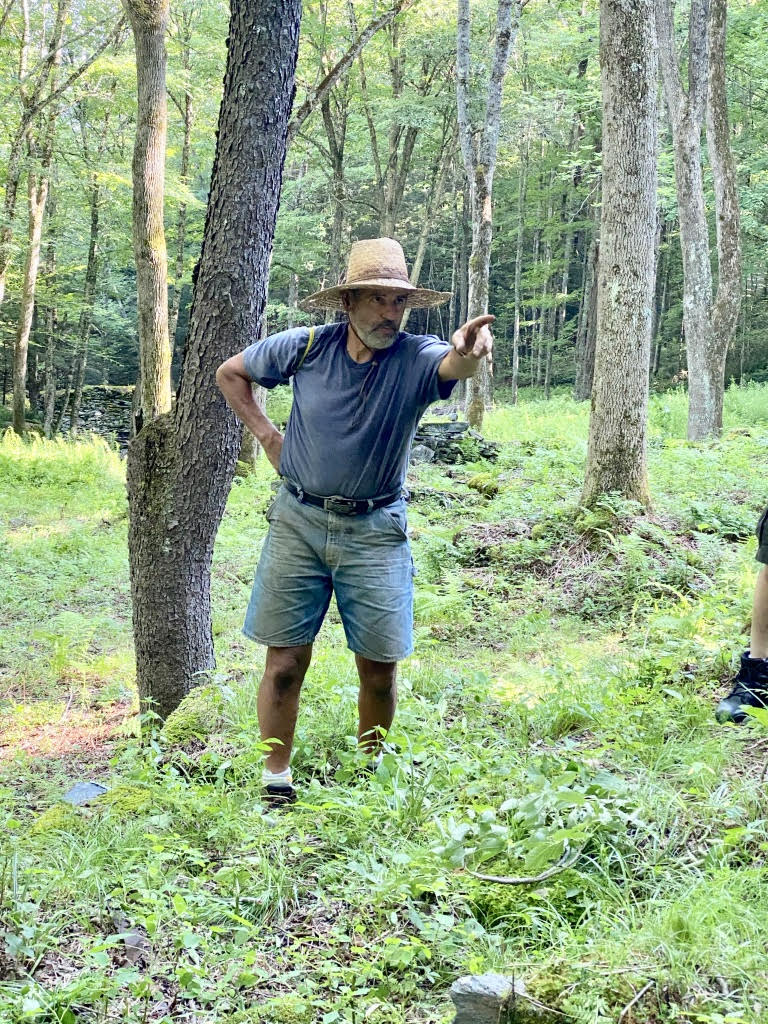Uncovering the Story Behind the Beals’ Bucket
Back in July of 2020, the PHS received an email from Dexter Beals, inquiring about a bucket that had been in his family for generations. Plainfield’s own, Joseph Beals, known as the ‘Mountain Miller’, was Dexter’s 4th great grandfather. Joseph Beals owned one of the first mills in Plainfield that was located on the Mill River. Today the Mill River Mill Site is owned by the Plainfield Historical Society and visitors can tour this unique site which sports the foundations of grist and saw mills, a tannery, and factories that produced a variety of items, including broom handles and woolen cloth. The last mill closed in 1924. The inscription on the metal band of the bucket says that it was presented to Dexter’s great grandfather, Luther Beals by James A Nash in 1893 and was a “toll measure”. It appears that Mr. Nash was also a mill operator in the same area as the Mountain Miller, but later in time.
Dexter’s research suggested that the toll, or payment for grinding grain, would have been about 1/16 of the total grind. “One would think that the toll would be taken per barrel or half barrel, so the volume of this bucket does not seem like it makes sense,” wrote Dexter. He went on to asked if anyone in the PHS might shed some light on the story behind this bucket.
Coincidentally, this year’s PHS’s annual meeting, held every year on the first Tuesday of August, included a presentation by historian and museum expert, Dennis Picard, so we turned to his expertise to see if he could shed any light on the origins of this bucket. After corresponding back and forth with information on the ‘Beals Bucket’, Dexter Beals, who is from the Arlington, MA, area, along with several family members, were invited to come to Plainfield, tour their ancestral home site and attend this years’ presentation on early-American tools. Along with several PHS members, including the ‘caretaker’ of the mill site, Dario Coletta, the Beals were treated to a private tour and were thrilled to explore the environs of the mill site. Guess you could say, visiting the Beals’ ancestral homestead was on their bucket list! The group then picnicked in the back of the Shaw Hudson House followed by an informative presentation at our annual meeting where Dennis Picard himself, highlighted this bucket.
Upon examining the bucket, Dennis could see by the way the bucket was constructed that it was a “hand coopered bucket with hand-forged or rose-head nails, not manufactured, something you don’t generally see after 1840.” Dennis verified that this was indeed a toll bucket used to measure how much a miller would be paid. “There are two ends to this bucket with the larger end being used to measure inexpensive grain, such as corn or maze, and the smaller end used to measure more expensive grains, such as oats or provender. Either types of grain would be measured as whole grain.” Dennis mused, “Could it be something that was given as a token – symbolic of the toll?” Could it be a church tithe?” As always, the more we learn about our history, the more questions we have!
To learn more about “The Mountain Miller” read The Mountain Miller: An Authentic Narrative by William A. Hallock. Published by The American Tract Society.
To learn more about the Mill Brook Mill Site read Part 1 and Part 2
Click here to learn about grist mills in New England.
Click here to learn more about the history of mills in Massachusetts











What a thrill to have the Beals visit us!